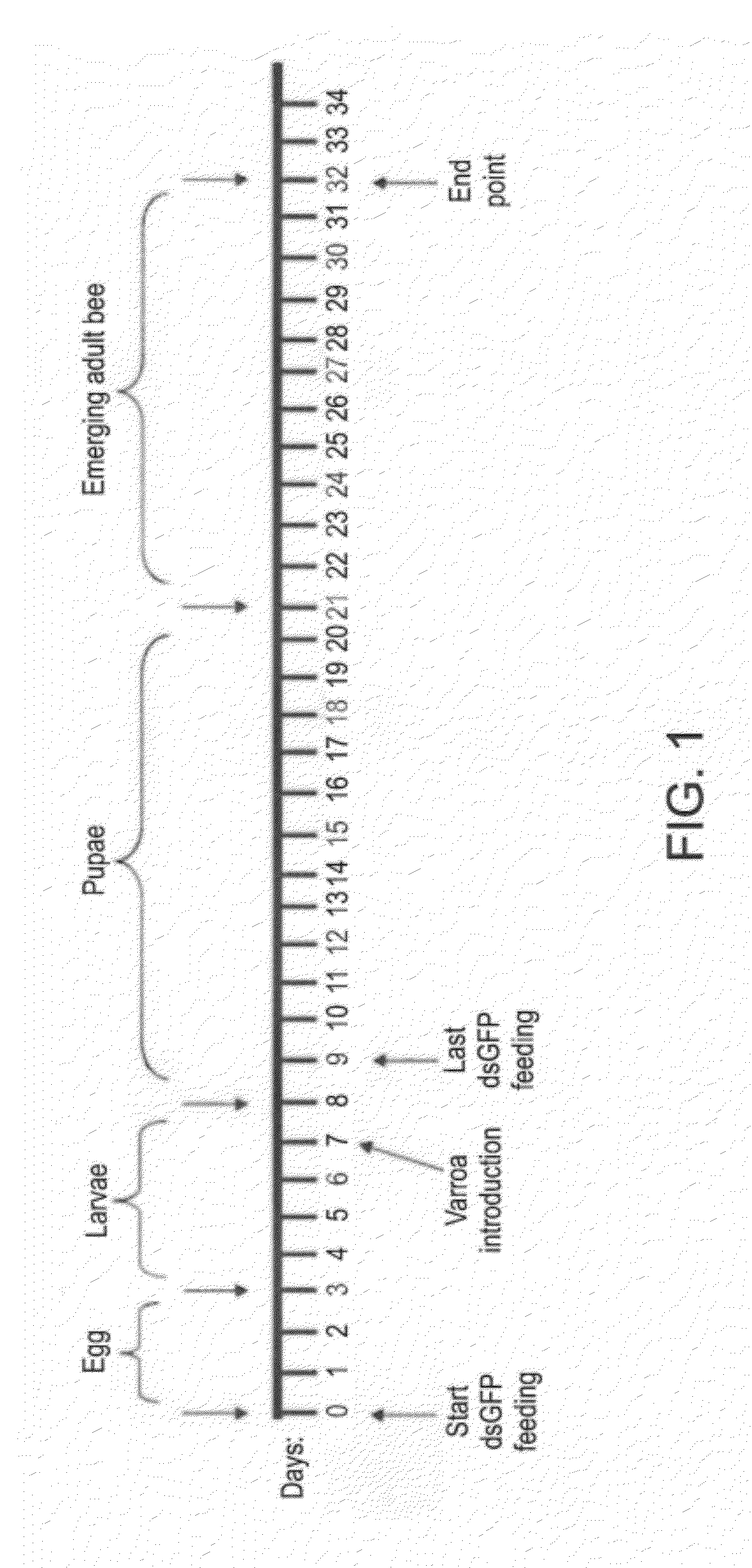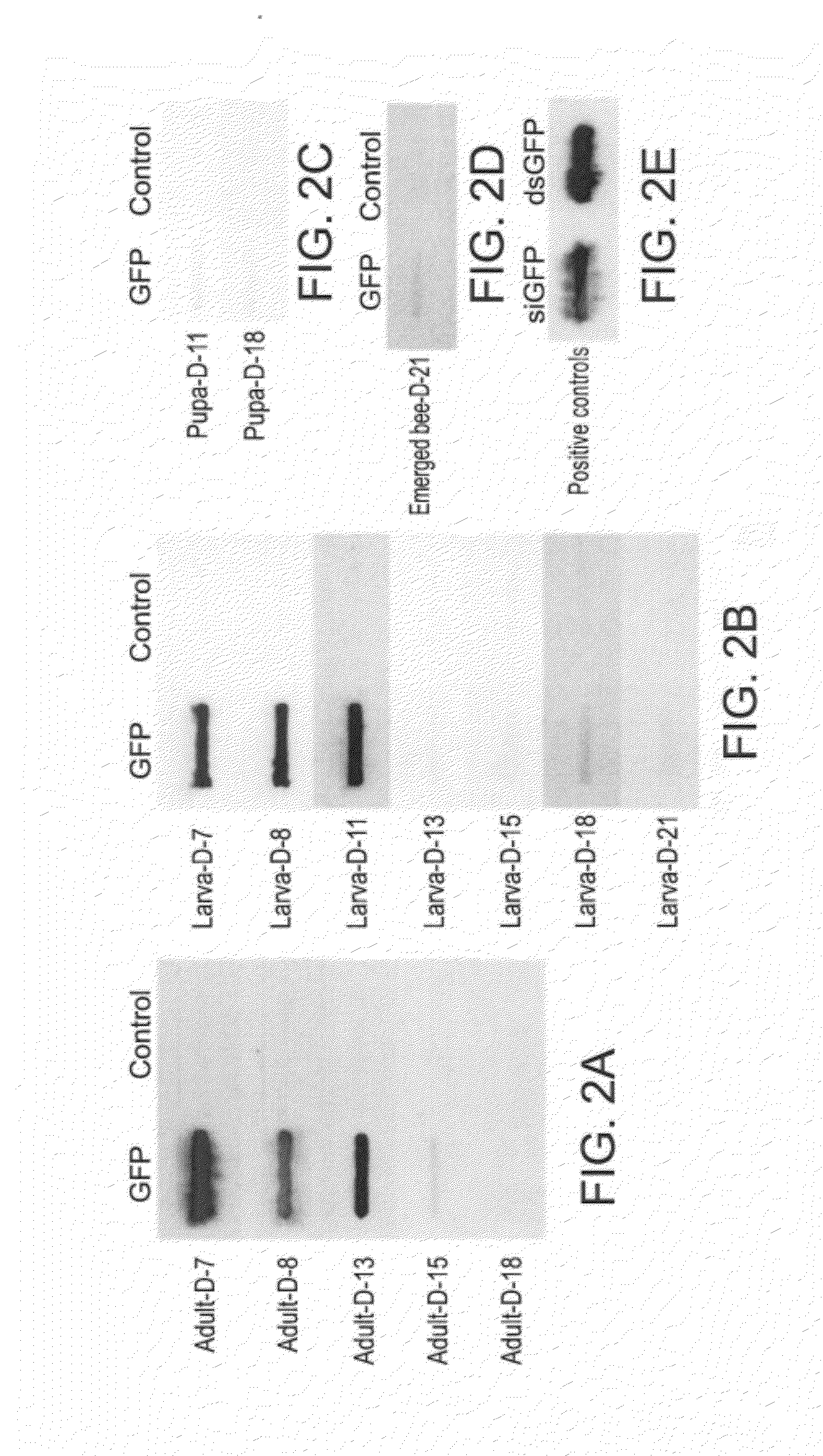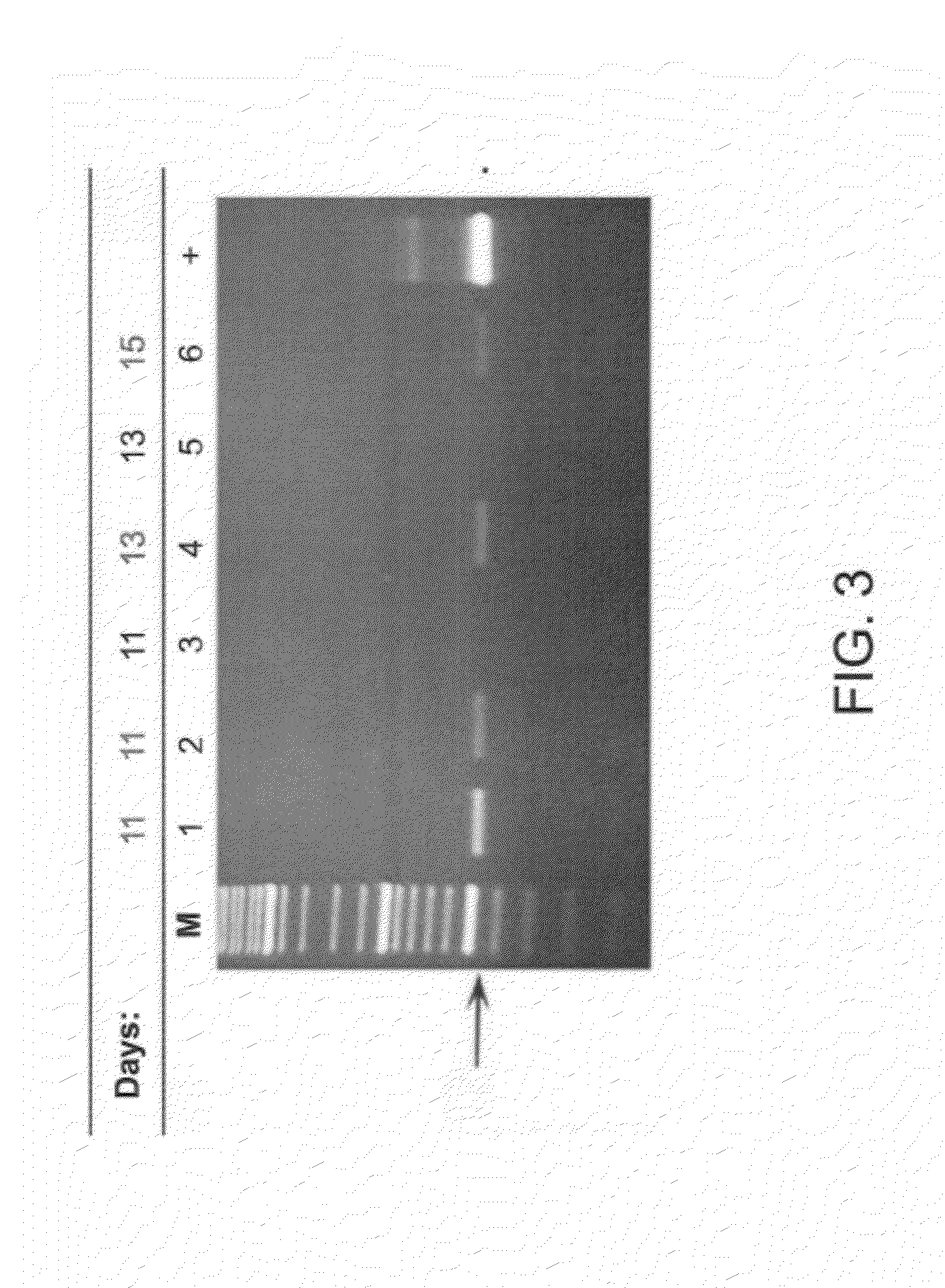Compositions for Controlling Varroa Mites in Bees
a technology for controlling varroa mites and bees, which is applied in the field of compositions for controlling varroa mite infestation in bees, can solve the problems of threatening to annihilate the u.s. and world agriculture, no effective preventative measures have been developed to date, and the immune system of the host is weak, so as to reduce the susceptibility of honeybees
- Summary
- Abstract
- Description
- Claims
- Application Information
AI Technical Summary
Benefits of technology
Problems solved by technology
Method used
Image
Examples
example 1
[0162]Feeding Varroa-specific dsRNA prevents Varroa mite infestation
[0163]In order to determine the effectiveness of ingested dsRNA on Varroa mite infestation, honeybees are provided with Varroa mite-specific and control dsRNA in the feed for 7 days before, and 2 days following contact with the Varroa mite, as illustrated in FIG. 1. Numbers of dead Varroa per experimental hive are counted, and sample live and dead Varroa are collected for molecular analysis.
[0164]Materials and Methods
[0165]Establishment of Mini-Hive Colonies:
[0166]Young, approximately 2-month-old queens, together with approximately 200 worker bees are collected from hives in a local apiary. The bees are transferred into mini-hives fitted with one mini comb that was previously built by a regular hive. All of the mini-hives are closed and placed in a temperature-controlled room (30° C.).
[0167]dsRNA Preparation:
[0168]Varroa mite sequences are cloned into a plasmid between two opposing T7 promoters. Following propagatio...
example 2
Materials and Methods
[0188]Hives were fed by two different mixtures of dsRNAs corresponding to Varroa gene segments. All dsRNA were corresponding to gene segments that are not homologous to bee or human sequences (not carrying stretches of homologous sequences longer than 19 bases). Mixture I (Minimum treatment) contained SEQ ID NOs: 1, 13, 27, 30 and 39. Mixture II (Maximum treatment) contained SEQ ID NOs: 1, 4, 7, 10, 13, 16, 19, 22, 25, 27, 30, 33, 36 and 39. Thirty Varroa individuals were placed in each hive and two months later Varroa and bees were counted in each hive. Each treatment was repeated 3 times.
[0189]Results
[0190]No visible damage to the strength of the hive was noticed among the various hives. FIG. 5 demonstrates the reduction of Varroa population following treatment with dsRNAs of Varroa's gene sequences.
example 3
Large-Scale Field Trials of Varroa-Specific dsRNA for Prevention of Varroa Mite-Associated Disease of Honeybees
[0191]In order to determine the effectiveness of ingested Varroa mite dsRNA on Varroa mite infestation under actual field conditions, and to assess effects on important parameters of colony health, bees in sample full size hives are provided with Varroa mite-specific dsRNA in the feed for 5 days before, and 4 days following infestation with Varroa mite.
[0192]Materials and Methods
[0193]Insect Material:
[0194]Pools of five bees from the following treatments; Remote control, Varroa mite-dsRNA only, Varroa mite only and Varroa mite-specific dsRNA+ Varroa mite at each time point day 0—(day of virus application), day 7 and end point (day 42). The test was repeated several times.
[0195]RNA Extraction:
[0196]RNA is extracted using Tri-Reagent (Sigma, USA) according to protocol provided by the manufacturer. All samples are treated with DNaseI and resuspended with loading buffer (90% Fo...
PUM
| Property | Measurement | Unit |
|---|---|---|
| Composition | aaaaa | aaaaa |
| Nucleic acid sequence | aaaaa | aaaaa |
Abstract
Description
Claims
Application Information
 Login to View More
Login to View More - R&D
- Intellectual Property
- Life Sciences
- Materials
- Tech Scout
- Unparalleled Data Quality
- Higher Quality Content
- 60% Fewer Hallucinations
Browse by: Latest US Patents, China's latest patents, Technical Efficacy Thesaurus, Application Domain, Technology Topic, Popular Technical Reports.
© 2025 PatSnap. All rights reserved.Legal|Privacy policy|Modern Slavery Act Transparency Statement|Sitemap|About US| Contact US: help@patsnap.com



